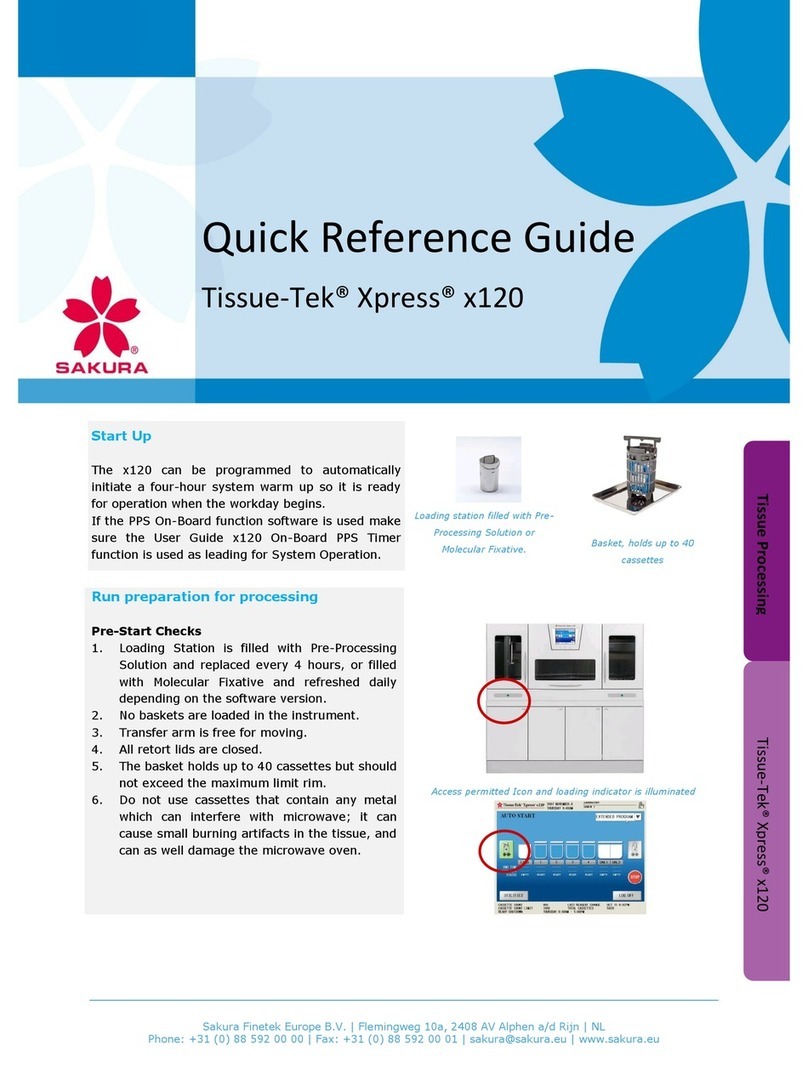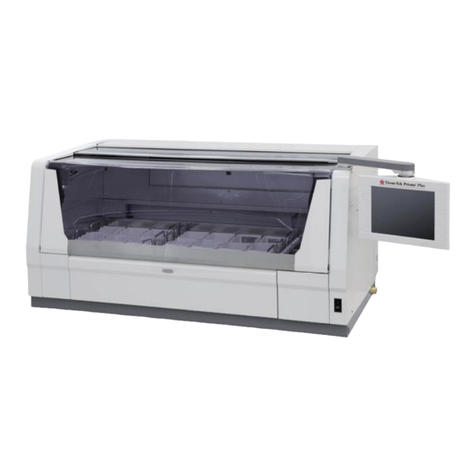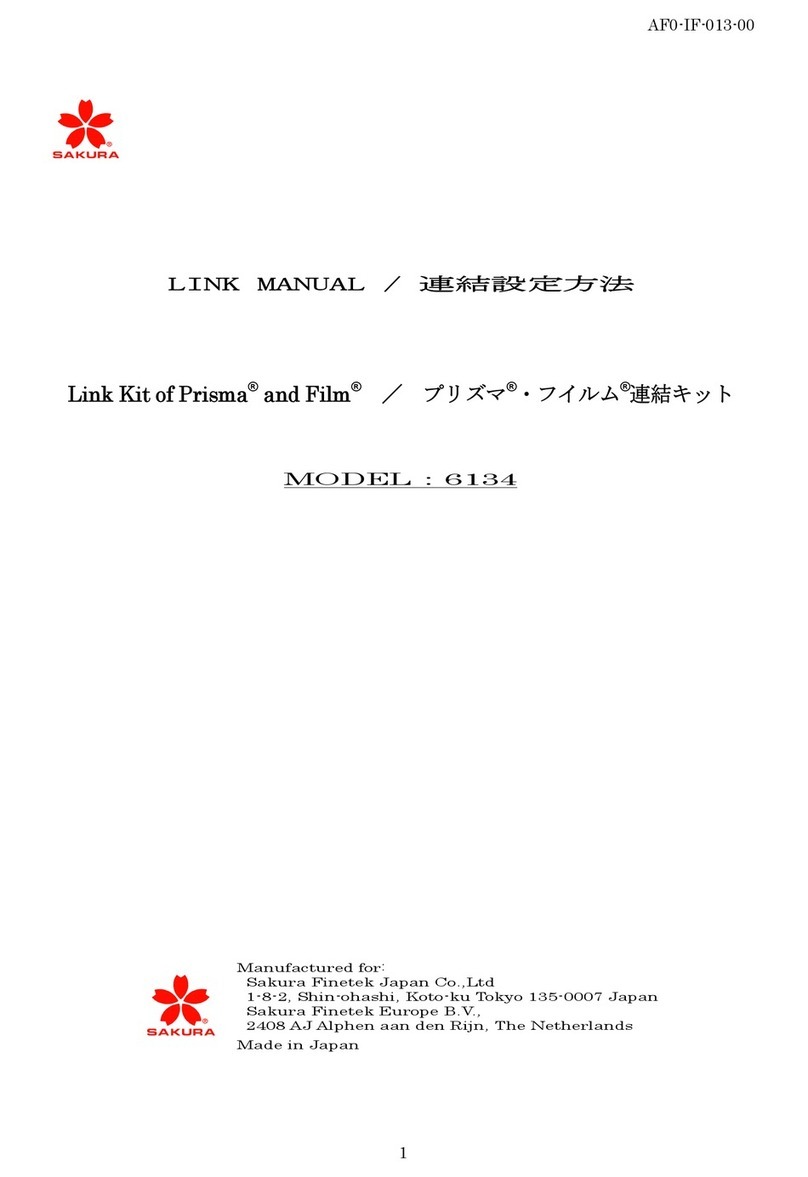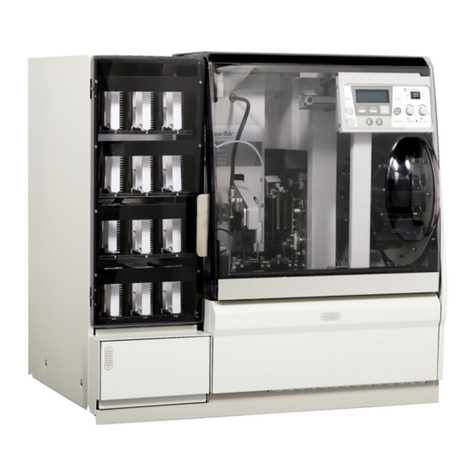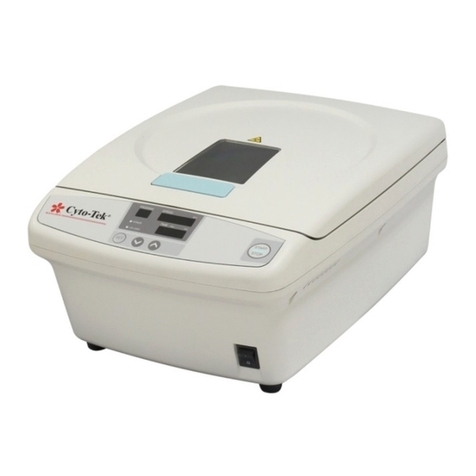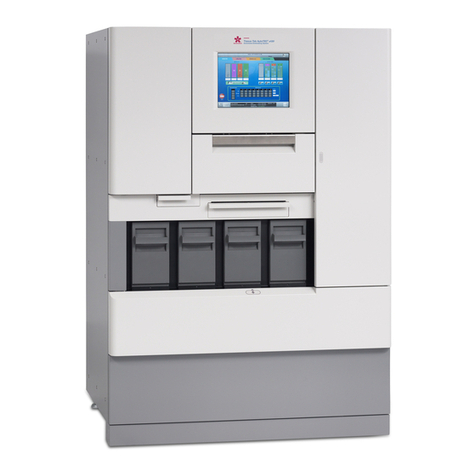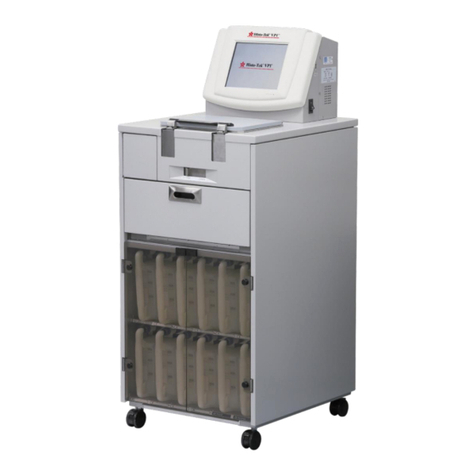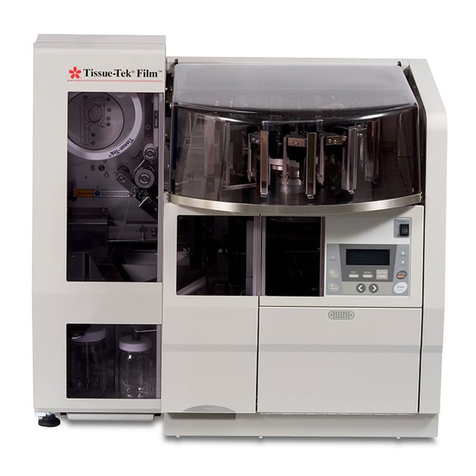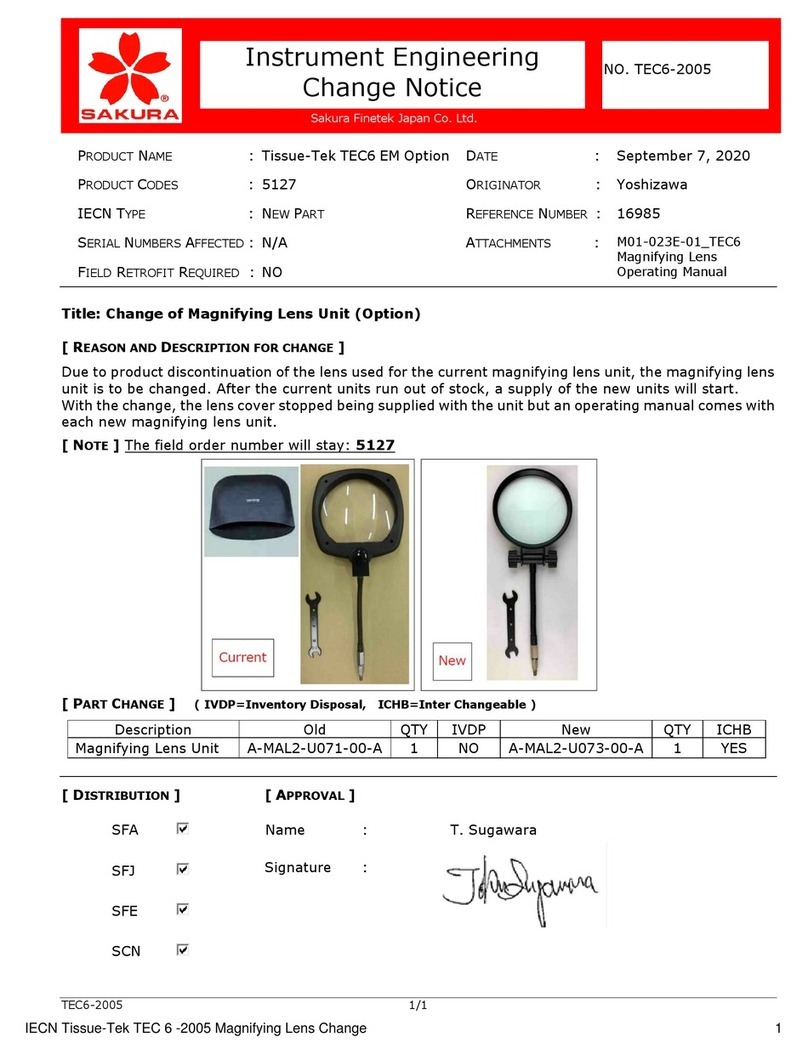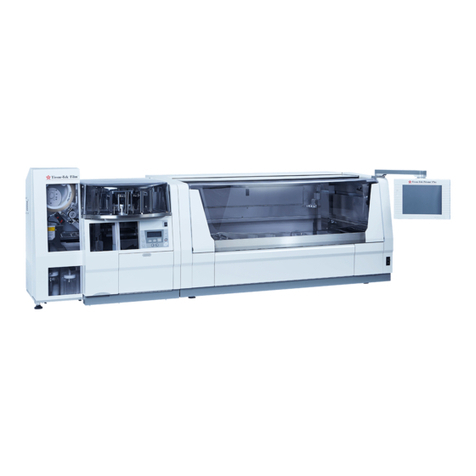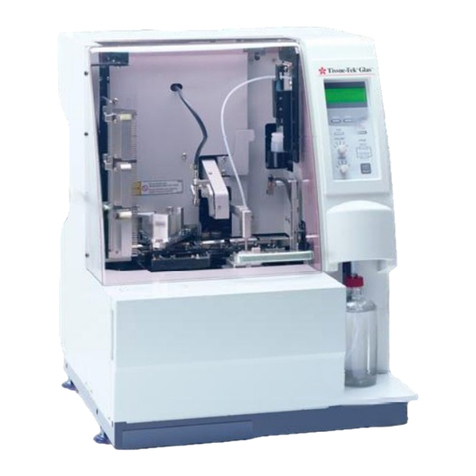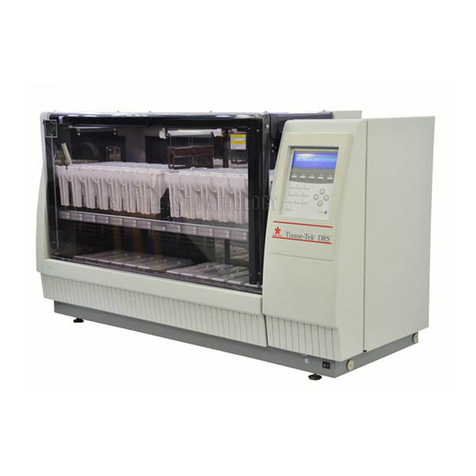
10
WARNINGS:
• Follow instructions in this operating manual.
If the instrument is not used properly, it may induce failure of the
instrument, injury to operators, and/or damages to facilities.
• Do not put ammable/explosive substances other than parafn in the
instrument.
When using the instrument, do not put flammable/explosive
substances other than parafn in the areas where parafn is intended
such as the parafn chamber and warming chamber. Doing so may
result in re or explosion.
• Do not move the instrument while molten parafn is inside.
Do not move the instrument while molten paraffin is inside. Before
moving the instrument, unplug the power cord and remove the parafn
inside the instrument or wait for it to cool and solidify. Failure to
follow this instruction may result in the parafn spilling over to cause
burns or contacting with live electrical parts to cause re.
• The instrument, parafn and parafn container become hot.
The paraffin melting part, paraffin and paraffin container in the
instrument become hot. Exercise caution to prevent burns.
• Do not disassemble or modify the instrument.
Do not disassemble or modify the instrument except for the areas
specified in this manual. The instrument may malfunction or cause
accident, thus creating a dangerous situation.
• Do not wet the instrument.
Do not wet the instrument except for the areas specified in this
manual. If the instrument gets wet, electrical current leak may occur
and cause re or electric shock.
• Do not operate the switches with a wet hand.
Failure to observe the instruction may result in electric shock.
• Do not connect/remove the power plug with a wet hand.
Failure to observe the instruction may result in electric shock.
• When connecting/removing the power plug, do so by holding the
plug.
Connecting/removing the power plug by holding parts other than the
plug may cause re or electric shock.
• Do not damage the power cord.
Do not forcibly bend, pull, twist or bundle the power cord. If the
damaged power cord is used, fire or electric shock may occur. If
the power cord or power plug has scratches or other abnormalities,
contact the Sakura instrument distributor or representative.
